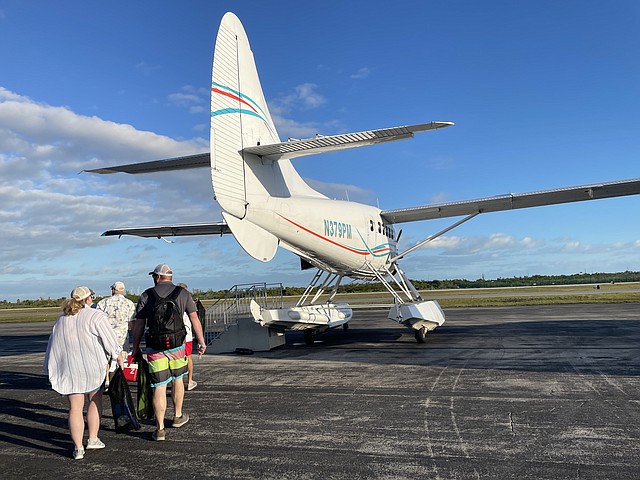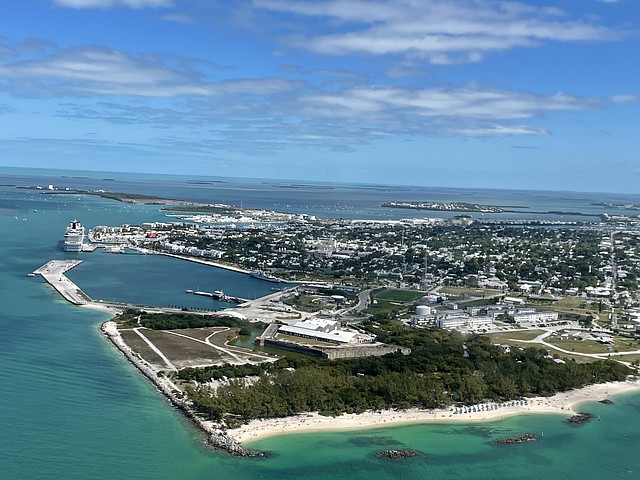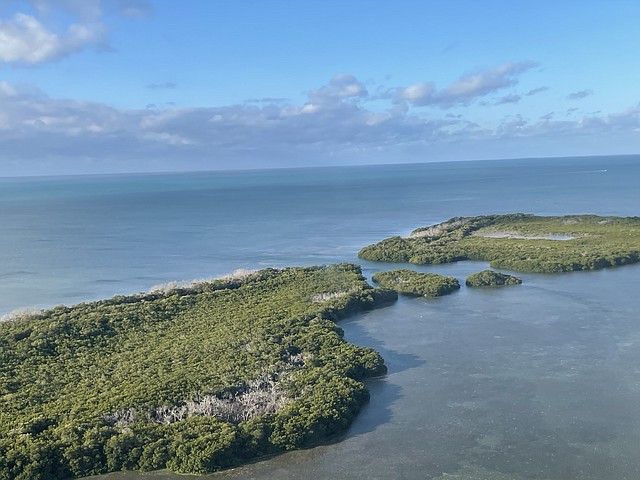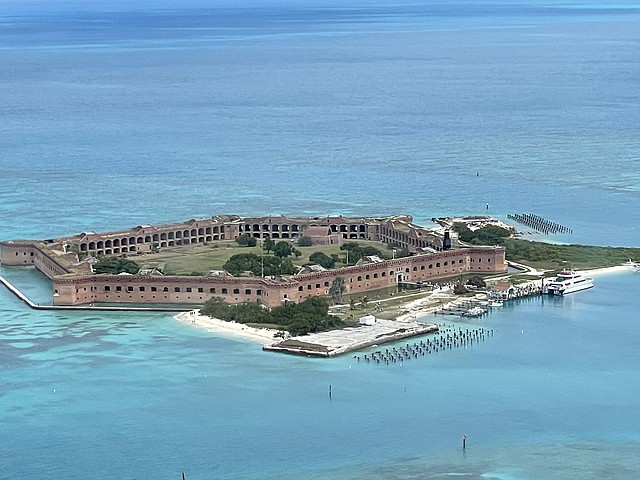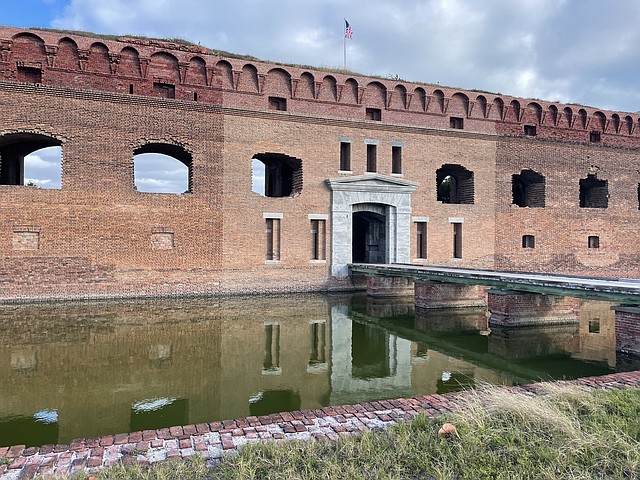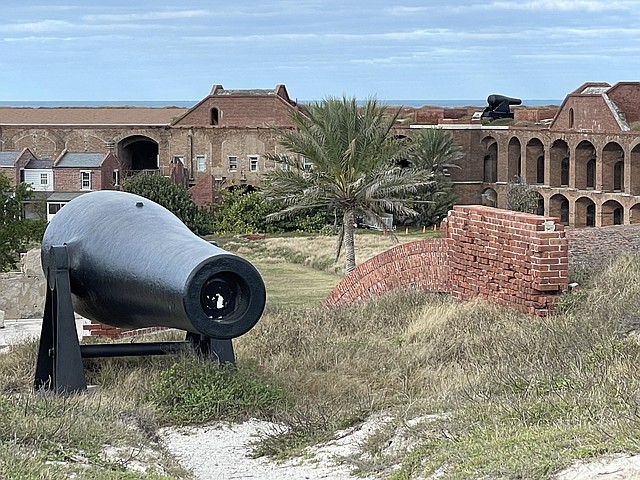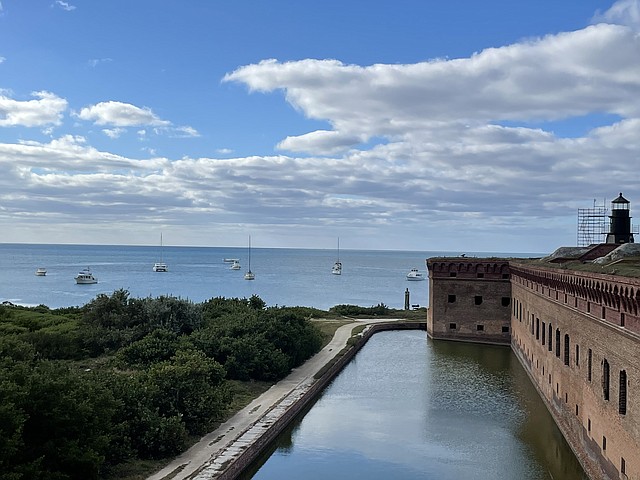Treasures abound at Florida’s Dry Tortugas National Park
May 23, 2022 at 6:00 a.m.
There were also numerous uninhabited mangrove islands along the way, Ballast Key being the exception. Once a private island owned by Key West icon David Wolkowsky, it is now under the government arm of the U.S. Fish and Wildlife Service. There’s a main residence, guest house and workshop, but only the former is visible from a seaplane or via the ferry.
The ships were heading to Spain full of plundered New World treasures. Spain was anxiously awaiting the arrival of the fleet, as the precious cargo was necessary to pay off its debts and loans and ease financial pressures. However, after the ships left Cuba, they were overtaken by a hurricane and within days, the Atocha and Santa Margarita went down. More than five hundred people drowned, along with over a half a billion dollars’ worth of gold and silver. It was a serious setback for Spain, whose global dominance was supported by the wealth of the Indies.
Flash forward to 1980 when noted treasure salver Mel Fisher and his team discovered a portion of the Margarita and recovered about $25 million in treasures and artifacts. Five years later and three miles away, they found a section of the Atocha shipwreck – a $400 million find. Today, millions in lost riches from these shipwrecks still remain buried beneath the sand and mud.
As we came into view of Garden Key, Fort Jefferson made its appearance. Garden Key is one of seven islands that comprise Dry Tortugas National Park. First discovered by Ponce De Leon in 1513, these islands were named Las Tortugas, “The Turtles,” due to the abundance of sea turtles. The word “dry” was subsequently added to alert mariners of the dearth of fresh water.
In its uncompleted state, the fort served as a military prison for captured deserters during the Civil War. It also held the four men convicted of complicity in President Lincoln’s assassination, the most famous being Dr. Samuel Mudd, the man who treated John Wilkes Booth after he shot Lincoln.
Towards the end of the war, the population on this remote garrison neared 2,000. The conditions were poor, as fresh water and food were always in short supply. Soldiers had to wear hot, heavy uniforms and their morale was low. Diseases were prevalent, especially scurvy. And the moat that surrounded the place ended up acting as an open sewer.
Visitors can do a self-guided tour of the fort, which covers eleven acres of the island’s total sixteen acres. It has undergone few changes since its original construction and as you walk around it, you can almost imagine what it was like to be at this isolated outpost 150 years ago.
This massive bastion is comprised of over sixteen million bricks and as such, is the largest brick masonry structure in the Americas. In a number of places, it’s crumbling down and in ruins, but you can also see some of the structural renovation and work that is being done to preserve the site.
There are several levels of the fort, reached via spiral staircases. Informational panels are posted in various spots and are helpful for identifying the different areas of the building, as well as for describing life for those stationed and imprisoned at the fort. They also provide details regarding the ammunitions and military weapons housed inside.
Dry Tortugas is known for its living coral reef, which is accessible to snorkelers right off the main swim beach. The shallow, clear and warm water are prime conditions for coral reefs to develop. The reefs teem with marine life – everything from sea anemones and lobsters to sponges and a plethora of colorful fish. At the top of the food chain are sharks and barracudas.
The islands are also home to endangered green sea turtles and threatened loggerhead turtles, who nest on the beaches. A female may lay up to a hundred eggs. She covers them and then retreats to the sea, while the hatchlings will instinctively crawl to the water. Unfortunately, many don’t make it due to natural predators.
If you’re a birder, Dry Tortugas is heaven because many species fly over or rest on the island, as they are on the main route between North and South America. In the winter, Sooty Terns are the stars. Upwards of 100,000 of these birds gather here for nesting season. Sharing the space with them are Brown Noddies. The area is closed to visitors during this time, but with binoculars, you can get a look at the rookery.
There’s no food or drink available on the island, so take what you need for the trip. Thankfully, there are toilets! If you want to spend the night, you’ll need to reserve one of the eleven campsites available.
On the return flight back to Key West, you might think the trip would be a rather ho-hum experience, as the route is basically the same. Au contraire! The scenery is equally as mesmerizing and the colors of the water, beyond description, but now you know exactly what to look for. With your eyes primed, you notice more details and savor the sights. All too soon you’ll be on terra firma.

